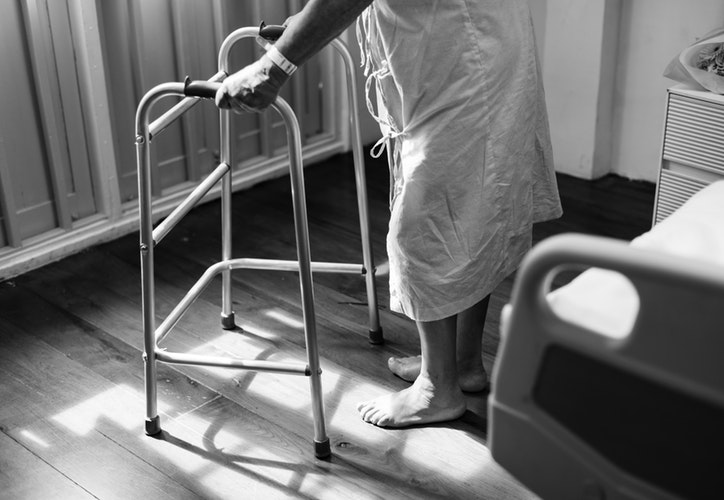In today’s’ climate of massive healthcare systems, giant hospitals and urgent cares sit on every corner. It seems that the days of smaller, more personalized medicine is a thing of the past- or is it?
Although it seems long ago, doctors once visited patients in their own homes, allowing them to provide more individualized care. In the present, medicine is being driven greatly by reimbursement, forcing doctors to take on multitudes of patients. This, along with giant healthcare systems and large brick and mortar hospitals being built, individualized medicine seems to have fallen by the wayside.
The Concept of Hospital at Home: Revisited

But now, things are slowly coming full circle again. Healthcare systems, such as Partners Healthcare in New England, have been looking at all angles to provide cost-effective, quality care along with finding ways to improve outcomes. It makes sense, at least to a few healthcare systems, that a more personalized approach does just that.
Life expectancy is higher. With the increase in chronic diseases and the need to manage patients better, Partners is revisiting this practice. It’s starting to bring more doctors to patients’ homes once again. However, this time, it comes with a lot more support.
This is not a new concept. In fact, over a decade ago, this model has been implemented in both parts of Europe and Australia. After seeing these programs flourish in other countries and having success with improved outcomes along with increased patient satisfaction and cost-effective care, programs are being piloted in many states.
The Pilot Study
Dr. David Levine, MD, MA, a physician and researcher in the Division of General Internal Medicine and Primary Care and principal investigator Jeff Schnipper, MD, MPH, piloted “The Home Hospital” project at Brigham and Woman’s Hospital and its sister hospital, the Faulkner.
Patients received visits from Dr. Levine and his team utilized advanced technology along with in-home imaging to provide patients with quality care in the comfort of their own home. The team tracked sleep and activity patterns which interestingly allowed them to test the theory that patients movement and sleep patterns are better at home as compared to the hospital.
Patients were also provided with a tablet. It allowed them to communicate directly with their team at any time of the day. The programs’ mission is to reduce unintended hospital events, optimize safety and quality, and maximize days at home while seamlessly coordinating with primary and community services.
Disappointingly, insurances are generally not yet paying for home admissions. Systems launching these programs, such as Partners, are footing most of the bill. They do it with hopes that to manage will lead to lower costs.
Excitingly, however, is that a recent study in the JAMA Internal Medicine found that the readmission rates for patients admitted at the home were lower than or equal to those admitted to the hospital. Along with this, the cost of the home admission was an average of $2,000 less per patient than a hospital stay.
The Exciting News
Since the pilot’s success last year, the program and the team at Partners has grown now having an average census of 4 patients per day. It has also expanded a variation of the program to Massachusetts General Hospital which is also within the Partners system.

Stacey Bencic, a seasoned home care nurse who worked on Dr. Levine’s team during the pilot states “I thoroughly believe in the 1-1 patient concept. Developing trust with patients and their families is a key component in patient satisfaction. It leads to better outcomes and health. I enjoyed seeing firsthand the positive outcomes and smiles on patients faces.”
As for Dr. Levine and the future of the program, Dr. Levine states, “Home Hospital” is growing steadily at Brigham with a lot of exciting new ways that we are caring for patients in their homes: new conditions, new technology, and logistics.”
Conclusion
While there will always be a need for the hospital, keeping patients at home decreases many risks. This, along with most patients desiring to remain at home, makes this model one worth continuing.
Author Bio:
 Dianne Cabelus-Braley RN, CNN, COS is a registered nurse blogger/writer and a CDS at Partners Health Care at Home. Dianne has had a lengthy nursing career practicing in many different areas of the profession. In addition to her nursing license, Dianne also holds a certification in aesthetics and an additional certification in nutrition, credentialing her as a certified nurse nutritionist (CNN). Dianne resides north of Boston Massachusetts with her husband and two children doggies and chickens. You can follow Dianne’s blog Nursing The Neighborhood.
Dianne Cabelus-Braley RN, CNN, COS is a registered nurse blogger/writer and a CDS at Partners Health Care at Home. Dianne has had a lengthy nursing career practicing in many different areas of the profession. In addition to her nursing license, Dianne also holds a certification in aesthetics and an additional certification in nutrition, credentialing her as a certified nurse nutritionist (CNN). Dianne resides north of Boston Massachusetts with her husband and two children doggies and chickens. You can follow Dianne’s blog Nursing The Neighborhood.



















